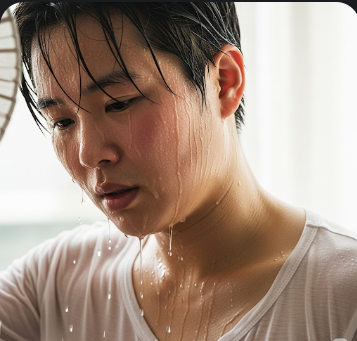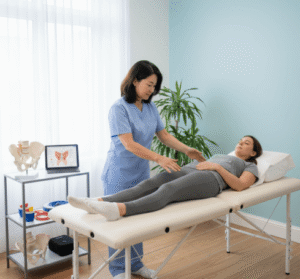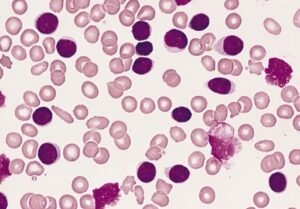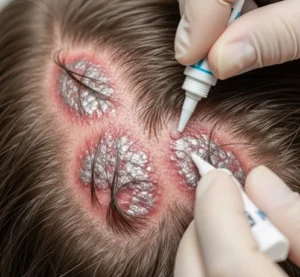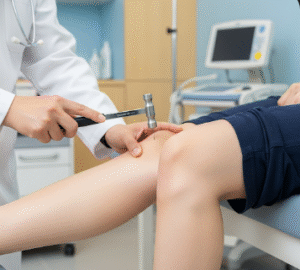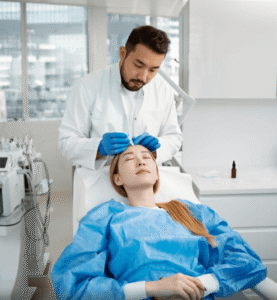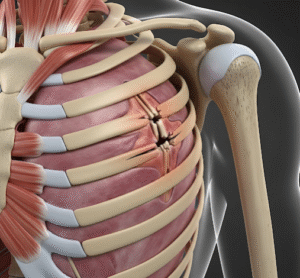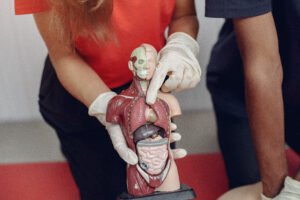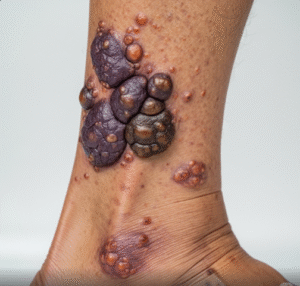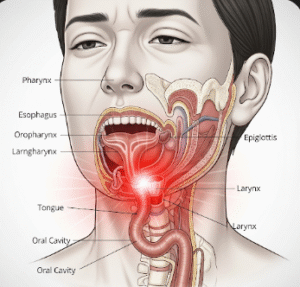Overview
Excessive sweating, medically known as hyperhidrosis, is a condition characterized by overproduction of sweat beyond what is necessary for body temperature regulation. It can affect the hands, feet, underarms, face, or other areas, and often interferes with daily life, work, and social interactions. In Korea, specialized clinics and hospitals provide advanced diagnosis, medical therapies, and surgical options to effectively manage excessive sweating and improve quality of life.
Key Facts
▶ Prevalence: Millions of people worldwide; can start in childhood, adolescence, or adulthood.
▶ Causes: Primary hyperhidrosis (idiopathic) or secondary hyperhidrosis due to medical conditions or medications.
▶ Associated Symptoms: Moist or clammy skin, skin irritation, social embarrassment, anxiety, and odor.
▶ Treatment Options in Korea: Antiperspirants, oral medications, Botox injections, iontophoresis, and surgical interventions like endoscopic thoracic sympathectomy.
▶ Urgency: Severe or persistent sweating affecting daily activities warrants medical evaluation.
What is Excessive Sweating?
Excessive sweating is beyond the normal thermoregulatory needs of the body and can be classified as:
▶ Primary Hyperhidrosis: Overactivity of sweat glands without underlying medical cause. Often affects palms, soles, underarms, or face.
▶ Secondary Hyperhidrosis: Caused by medical conditions such as diabetes, thyroid disorders, infections, menopause, or medications.
▶ Localized Sweating: Limited to specific areas like hands, feet, or underarms.
▶ Generalized Sweating: Affects large areas or the whole body, often linked to systemic conditions.
Note: Early evaluation is important to determine type, cause, and best treatment approach.
What Symptoms Are Related to Excessive Sweating?
▶ Visible Moisture: Hands, feet, armpits, or face appear constantly wet.
▶ Skin Irritation: Rashes, fungal infections, or cracking from prolonged moisture.
▶ Odor: Sweat accumulation may lead to unpleasant smell.
▶ Social and Emotional Impact: Embarrassment, anxiety, or avoidance of social situations.
▶ Difficulty Handling Objects: Slippery hands may interfere with writing, typing, or holding items.
▶ Sleep Disruption: Night sweats can disturb rest.
▶ Temperature Sensitivity: Discomfort in hot environments.
▶ Associated Pain or Tingling: Rarely, nerve-related sensations in severe cases.
What Causes / Possible Causes
Excessive sweating arises from overactive sweat glands or underlying medical conditions:
▶ Primary Hyperhidrosis: Genetic predisposition; sweat glands are overactive without systemic disease.
▶ Secondary Hyperhidrosis: Triggered by:
▶ Medical Conditions: Diabetes, hyperthyroidism, infections, obesity, menopause, or cancer.
▶ Medications: Antidepressants, antipyretics, or diabetic medications.
▶ Hormonal Changes: Puberty, pregnancy, or menopause.
▶ Neurological Disorders: Parkinson’s disease, spinal cord injuries, or stroke.
▶ Environmental Triggers: Hot weather, physical activity, or stress can worsen symptoms.
▶ Lifestyle Factors: Alcohol, caffeine, or spicy foods may exacerbate sweating.
Note: Identifying the underlying cause is crucial for effective, targeted treatment.
When Should I See a Doctor?
▶ Persistent Sweating: Daily, excessive sweating not related to heat or exercise.
▶ Functional Impairment: Interfering with work, school, or social activities.
▶ Skin Complications: Recurrent rashes, infections, or cracking.
▶ Sudden Onset: New excessive sweating in adults may indicate an underlying medical condition.
▶ Night Sweats: Persistent or severe nocturnal sweating.
▶ Associated Symptoms: Fever, weight loss, palpitations, or fatigue.
▶ Emotional Distress: Anxiety or social withdrawal due to sweating.
Tip: Korean clinics provide specialized evaluation, diagnostics, and treatment plans tailored to the type and severity of hyperhidrosis.
Care and Treatment
Management of excessive sweating includes medical, procedural, and lifestyle interventions:
▶ Topical Antiperspirants: Aluminum chloride-based formulations to reduce sweating.
▶ Oral Medications: Anticholinergics or beta-blockers to control overactive sweat glands.
▶ Botox (Botulinum Toxin) Injections: Temporarily block nerve signals to sweat glands.
▶ Iontophoresis: Electrical therapy for hands and feet to reduce sweating.
▶ Surgical Options: Endoscopic thoracic sympathectomy (ETS) for severe, refractory cases.
▶ Lifestyle Adjustments: Breathable clothing, frequent washing, and avoiding triggers.
▶ Psychological Support: Counseling for anxiety or social embarrassment.
▶ Monitoring: Regular follow-up to evaluate response to therapy and prevent complications.
Treatment Options in Korea
Medical Evaluation:
▶ Detailed History and Physical Exam: Assess severity, distribution, and impact on daily life.
▶ Laboratory Tests: Rule out secondary causes such as thyroid disorders, diabetes, or infections.
▶ Specialist Consultation: Dermatologists, neurologists, or endocrinologists for tailored care.
Advanced Therapies:
▶ Botox Therapy: Minimally invasive, effective for localized hyperhidrosis.
▶ Iontophoresis Devices: Available in clinics for hands and feet treatment.
▶ Endoscopic Thoracic Sympathectomy (ETS): Surgical option for severe cases not responsive to other treatments.
▶ Combination Therapy: Medical and procedural interventions for optimal results.
▶ Multidisciplinary Care: Coordination among dermatologists, surgeons, and psychologists for holistic management.
Rehabilitation & Support:
▶ Patient Education: Identify triggers, maintain skin hygiene, and adopt preventive strategies.
▶ Follow-Up Care: Monitor effectiveness of treatments and adjust as needed.
▶ Specialist Clinics: Korean hospitals provide integrated care combining diagnostics, medical therapy, and procedural interventions for long-term relief.
Outcome: With early diagnosis and comprehensive treatment in Korea, excessive sweating can be effectively managed, restoring comfort, confidence, and daily functioning.

